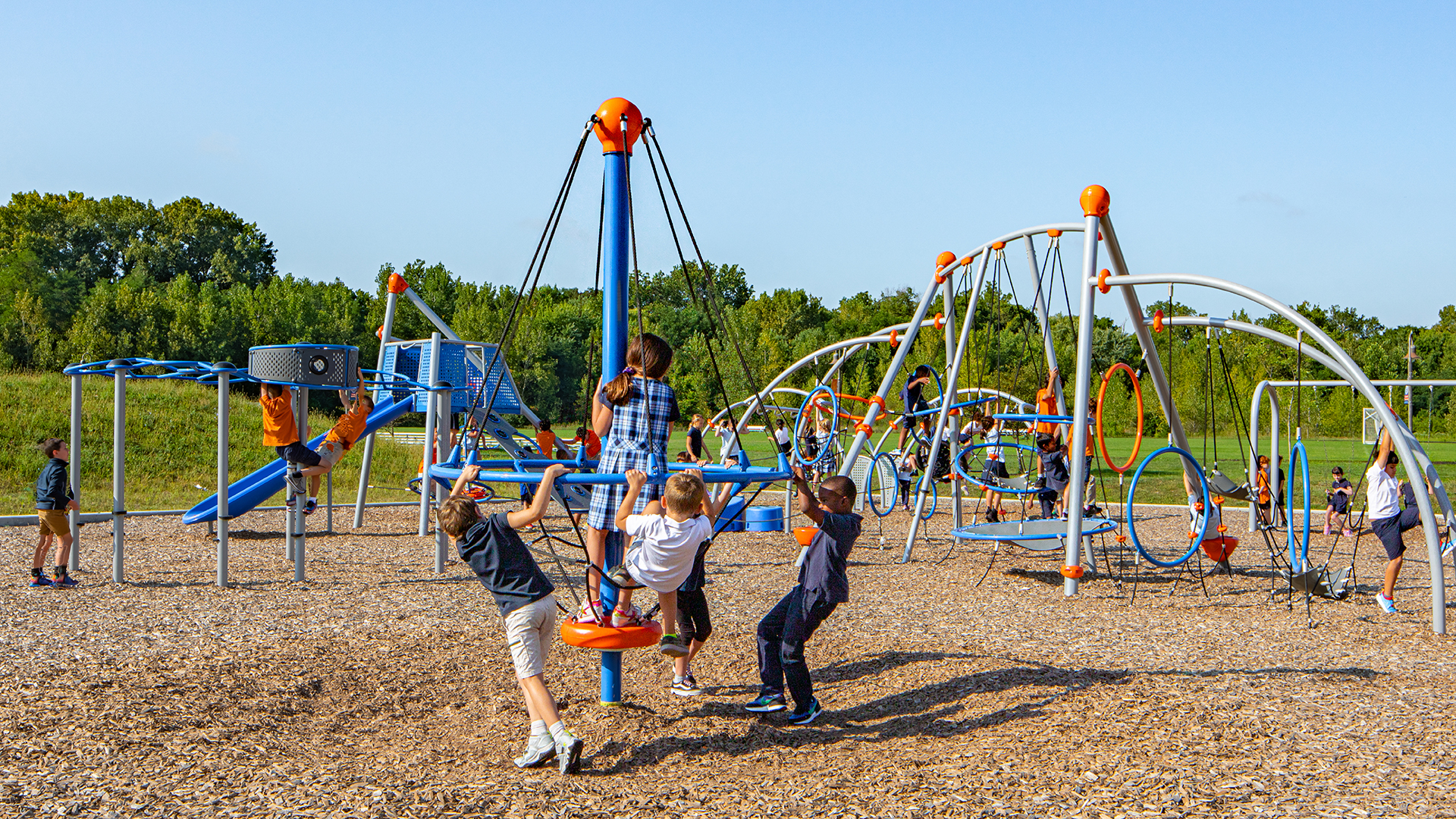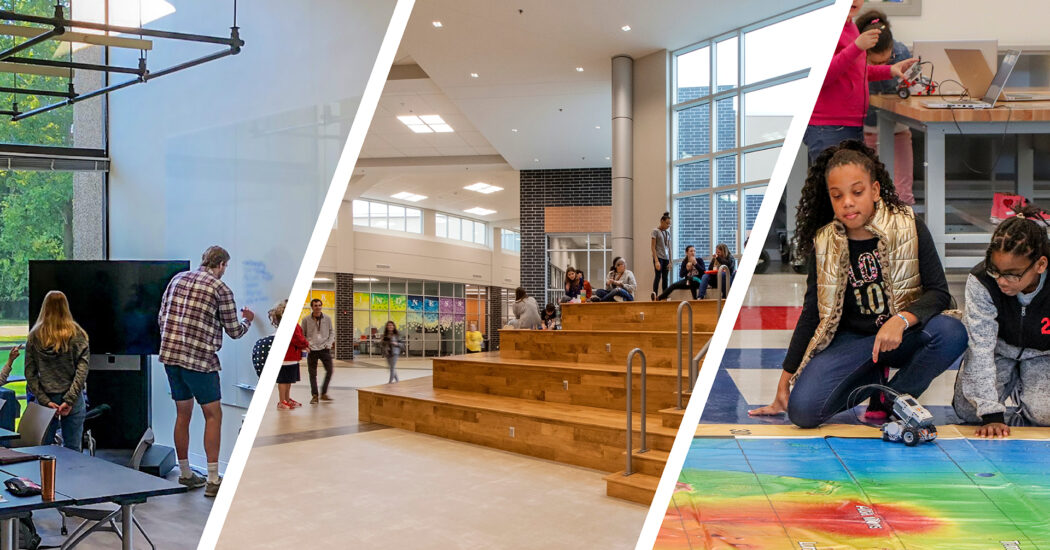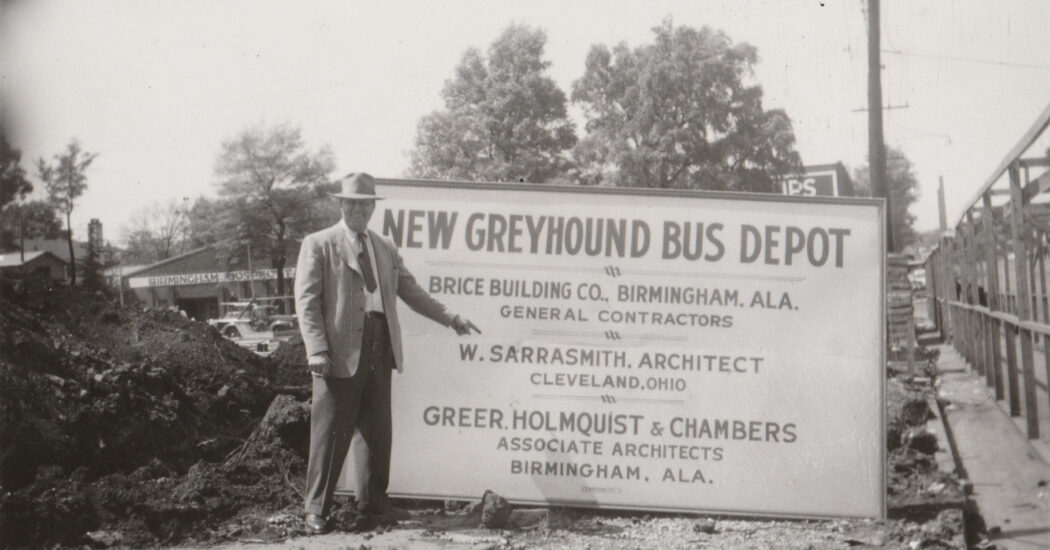Safeguarding Your Playground Design: Steps Owners Can Take to Minimize Injuries
-
Category
Studio-K12, Innovation -
Posted By
Kyle Miller -
Posted On
May 30, 2024
Playgrounds are an essential part of childhood joy, but they also can represent significant liability if not designed and maintained with safety in mind. Because knowledge and understanding lead to safety, we have compiled thoughtful details to help our Owners through the process. Read on to learn more about designing and maintaining safe play environments for children.
Understanding Playground Terminology
Before going any further, it is necessary to understand playground safety terminology. The well-being of the children using the site is essential. However, understanding the difference between a risk/challenge and a hazard can help Owners categorize the various aspects. Risk or challenge is necessary for child development, but it must be managed. Due to developmental differences, what is challenging for one student may be hazardous for another. For example, younger children don’t typically have the upper body strength for overhead climbing. Design teams who effectively collaborate with Owners play a crucial role in not only mitigating risk, but also in developing state-of-the-art playgrounds. Hazards are elements or conditions that could cause harm. They can be unknown, hidden, unforeseen, or unexpected, but preparing for them and having a plan to address them is highly recommended.
The Effect of Unstructured Play: Nurturing Growth With K-12 Playground Design: How Unstructured Play Leads to Positive Outcomes
The Anatomy of a Safe Playground
Safe playgrounds feature composite play structures, swings, slides, and a “use zone,” which is the area around playground equipment that is designed to be clear of obstructions. To add safety to your playground project, keep in mind the following:
- Swings: The use zone should be twice the height of the swing set from front to back.
- Slides: At the end of a slide, the use zone should be at least six feet minimum, and eight feet maximum.
- Critical Heights: This is the height where a fall could cause a severe injury, and it dictates the necessary depth of protective surfacing.
- Loose-Fill Surfacing: To reduce injury risks, playground materials like engineered wood fibers should be used to cushion falls.
- Unitary Surfacing: Pre-formed, solid surfaces like rubber mats, tiles, or poured in place surfaces can lessen the severity of injuries.
Design Trends for Modern Playgrounds
Modern playground design focuses on inclusivity and accessibility for play spaces to be fun and enjoyable. To achieve this goal, we recommend:
- Playground Routes: Clearly defining paths and connections between play structures can reduce conflicts.
- Surfacing: Investing in safer, more durable materials is not only smart and sustainable, but also beneficial to safety.
- Accessible Play Elements: Be sure that equipment can be used by children with diverse needs. Playgrounds cater to many groups of children, and the equipment should reflect their abilities.
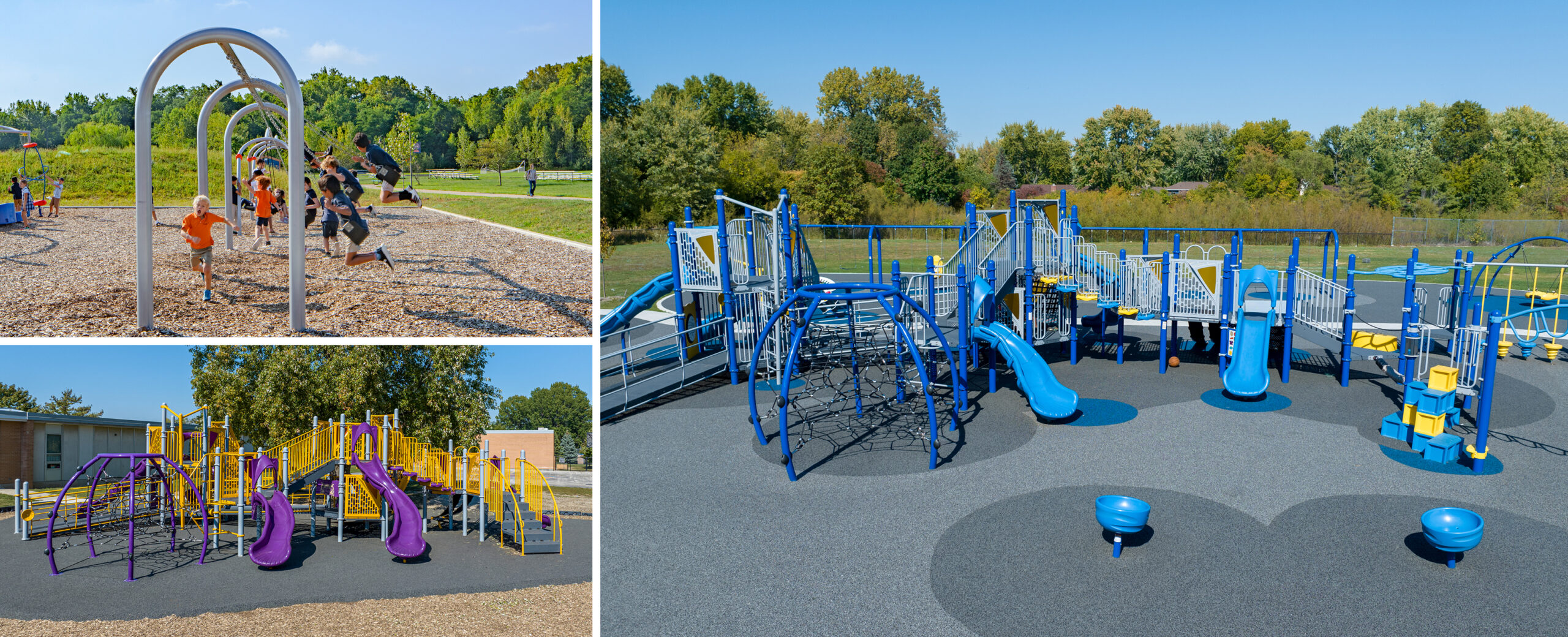
Safety and Inspections: Preventing Injuries
According to the Consumer Product Safety Commission, annually, more than 200,000 injuries occur on playgrounds, and 80% of those injuries are from falls endured by children ages 2-9. With sobering statistics like these, the need for regular inspections and documentation is critical.
When formulating plans for modern playground design, we often refer to “The Dirty Dozen Checklist.” This 12-point guide covers key safety concerns such as improper surfacing, inadequate use zones, and hazards like protrusions or entrapments. Other critical standards and laws to be familiar with are the U.S. Consumer Product Safety Commission’s Handbook for Public Playgrounds, ASTM F1487-21, and the ADA Standards for Accessible Design.
Assessing and Replacing Playground Equipment
Typically, a standard playground should last between 10-12 years from the original installation date. However, some have lasted as long as 15-20 years without any updates. We suggest looking at longevity, product warranties and manufacturer support to determine the best option.
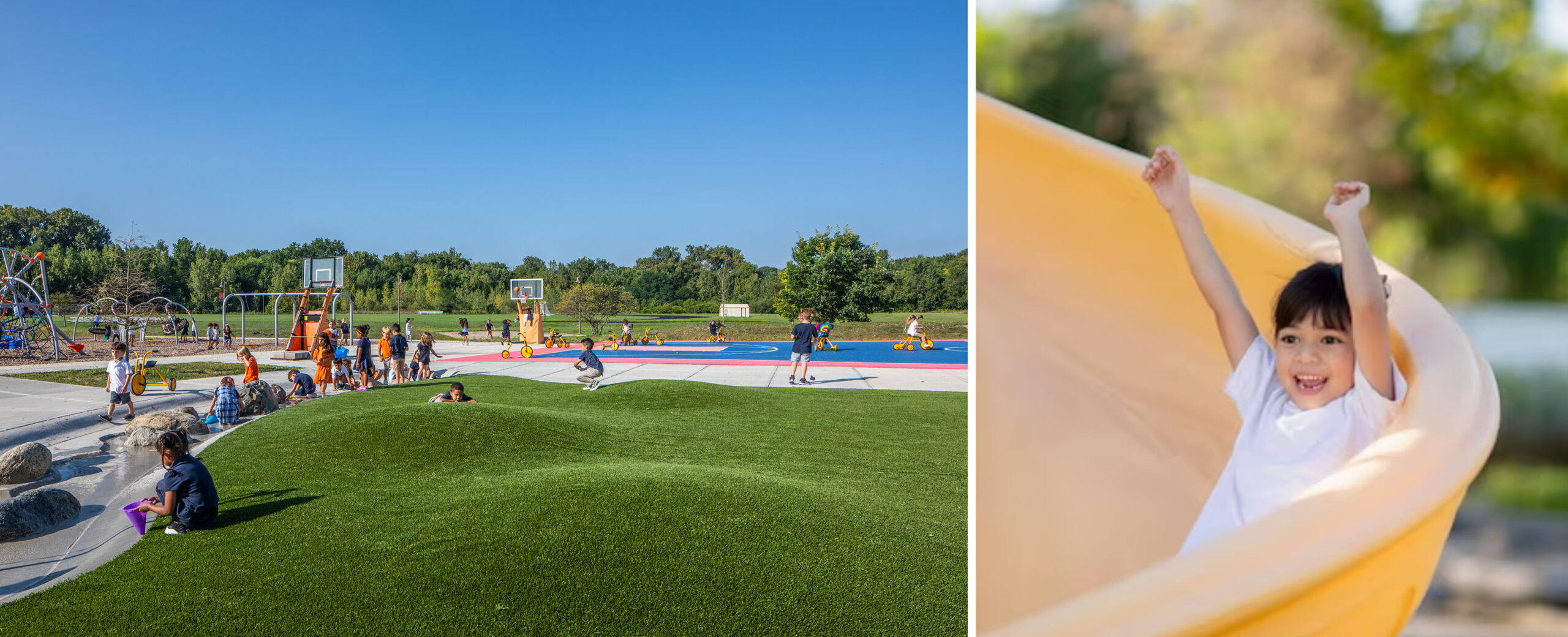

Maintenance and Installation
Maintaining a playground requires regular service and an understanding of the costs involved. Be sure to allocate enough money each year to cover these costs. For new installations, determine if it makes sense to do a co-op or public bid. If your project requires a specific piece of equipment, a cooperative purchase bid my be best. Every project is different, so choose the best option for your project’s scope. We are here to help you in making the best decision.
Key Takeaways
When designing safe playgrounds, Owners play a vital role in keeping these structures safe for children. By working with a trusted architectural and engineering partner to develop a safe and modern playground design, growth can be nurtured, and well-being will always be a top priority. For added piece of mind, always remember to put safety first, maintain protective surfacing, conduct regular inspections, practice thorough record-keeping, and have a replacement plan ready when the time comes.
Want our help in designing a safe playground for your school? Let’s talk.
With an education in architecture, civil engineering, and construction administration, Kyle Miller possesses an understanding of all design disciplines, making him an ideal leader for playground projects. In his role, he maintains schedule, budget, and scope while providing overall leadership from start to finish.
* Portions of this blog were presented at the Indiana Association of School Business Officials Annual Conference and Expo.





